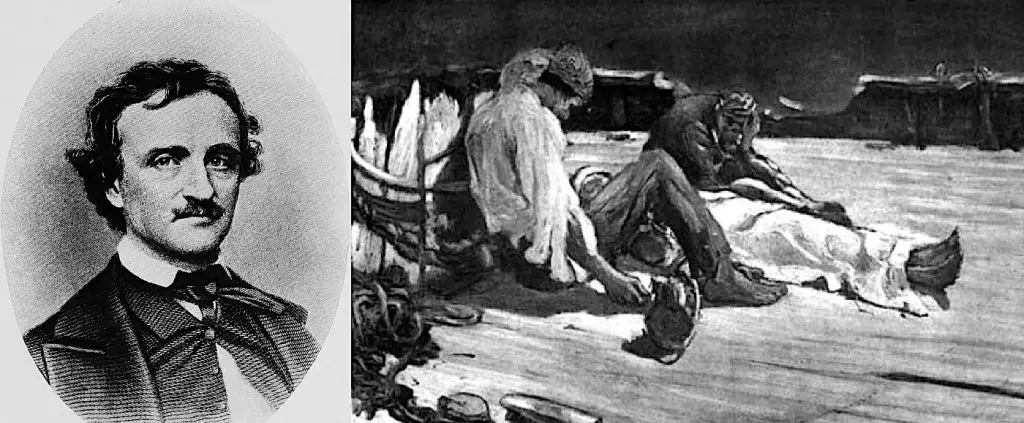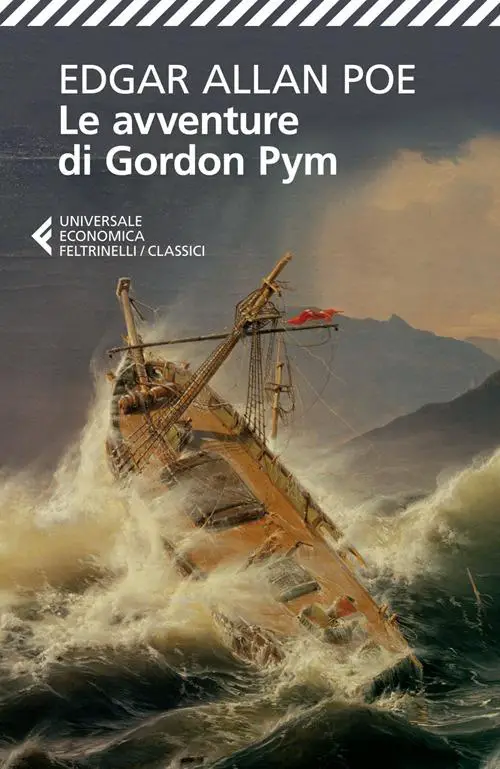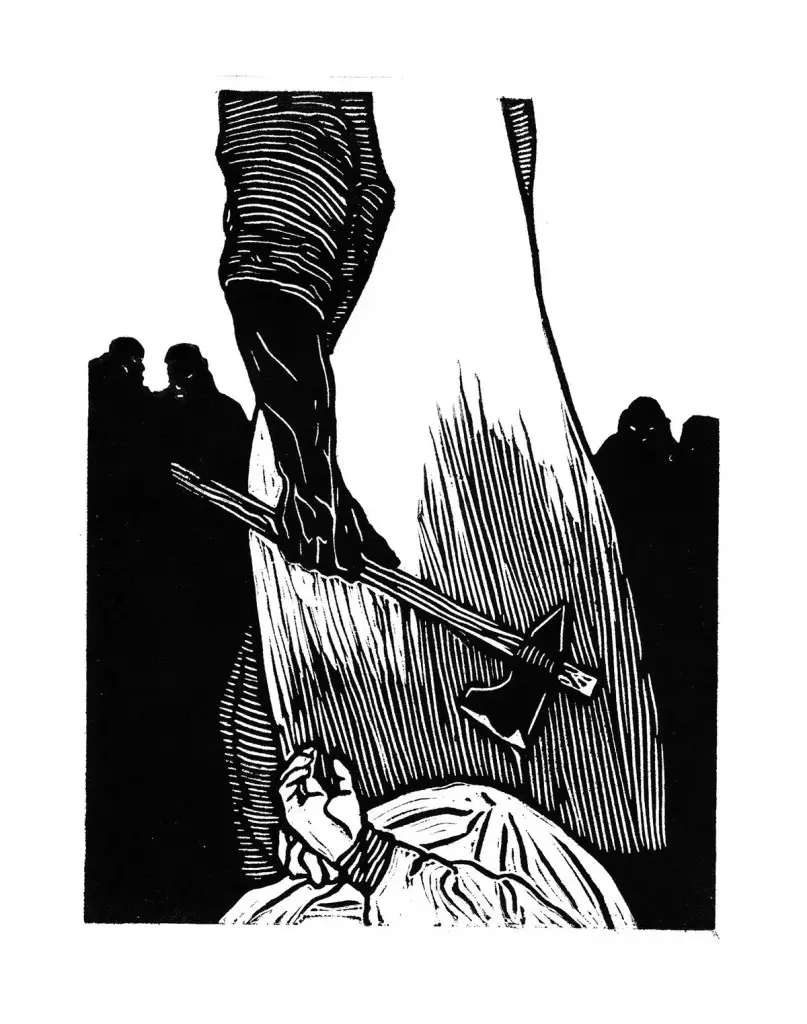Edgar Allan Poe was a prophetic master of macabre twists. But the most disturbing thing is the novel he wrote about the sinking of a ship, The Narrative of Arthur Gordon Pym of Nantucket, in which he evoked the same name of a man who 50 years later in real life would be shipwrecked and, exactly as described in the book, be eaten by his fellow passengers.
di Hephzibah Anderson
Translation by Marco Maculotti
originally published on bbc.com on 5 September 2019
Literary prophecy has a long and colorful history that stretches from ancient Greece and biblical Israel to science fiction. Even the Beat poets dabbled in prophetic mystery - here is Allen Ginsberg's cry from his poem Magic Psalm: “I am your Prophet returned to this world to scream an unbearable Name through my five senses”. However, as far as unnerving accuracy is concerned, there are few literary episodes as spine-tingling as The Narrative of Arthur Gordon Pym of Nantucket, the only complete novel by Edgar Allan Poe.
A maritime adventure published in 1838, full of typical seafaring elements such as shipwreck, mutiny and ghost ships full of corpses, together with hostile islanders and a a truly alarming yeti-like threat. The book also talks about cannibalismAnd this is where things get really weird. Poe evoked in his novel the very name of a man who, 50 years later in real life, would be shipwrecked and — exactly as described in the book — eaten by his fellow passengers.

The novel is presented as a mock memoir in which the eponymous narrator Pym describes a perilous journey. It all begins when he, as a student, becomes friends with Augustus Barnard, son of a ship captain. Augustus' tales of prowess on the high seas inspire in Pym an irrepressible desire to set sail and, after many boat rides, Augustus decides to help Pym stow away on his father's whaler, the Grampus. Following a mutiny and a monstrous storm, Augustus and Pym find themselves in command of the battered remains of the ship, accompanied only by two other people, Dirk Peters and Richard Parker.
However, their ordeal has only just begun, and Pym's 25-chapter-long story still stands only halfway through, when the survivors — who have lived for days on little more than the remains of a tortoise and are nearly delirious with thirst — are forced to contemplate the unimaginable: sacrifice one of them to ensure the survival of the others. According to the custom of the sea, they cast lots for the victim; in the end it is only Pym and Parker who lose their lives in the "fearful feast".
There is an all-round aura of strangeness that pervades Poe's short life and enduring legacy.
For Poe, it was a check job, or so he hoped. Newly married to his wife (who was also his first cousin) and desperately struggling, the publisher had assured him that readers preferred his longer works. However, initial response to his novel was less than favorable. Some critics objected to his violent lashings, others to his nautical inaccuracies. Poe himself eventually joined in, calling it "a very silly book."
In the following decades, opinion began to change. TO Jules Verne, conventionally considered the father of science fiction, liked it so much that he published a sequel in 1897, entitled Antarctic mystery. Poe's book is said to foreshadow Moby Dick and that it has inspired authors such as Henry James and Arthur Conan Doyle. Baudelaire translated it and the great Argentine writer Jorge Luis Borges he stated that it is simply Poe's greatest work. And Yann Martel, let's not forget, ingeniously named the tiger of Life of Pi Richard Parker.

A SURPRISING SYNCHRONICITY
What about this macabre parallel between reality and fiction? Well it went seemingly unnoticed until a descendant of the true Richard Parker brought it to light. Nigel Parker has written of the striking similarities between Poe's work and his ancestor's subsequent fate: Parker was one of four shipwrecked survivors, who ate a turtle before resorting to cannibalism. Cannibalism with Parker as the victim. Nigel Parker related all of this in a letter to writer and parapsychology aficionado Arthur Koestler, who had asked the public for tales of “surprising coincidences”. Koestler was so impressed by the synchronicity that he published the letter in the Sunday Times in 1974.
It is an eerie footnote that fuels an aura of general strangeness that pervades Poe's short life and enduring legacy, and that casts him as an archetypal tormented artist touched by otherworldly traits.. The episode joins the mystery of his premature death, which occurred at the age of 40, only four days after appearing delirious on the streets of Baltimore, dressed in someone else's clothes. The idea that he could peer into the future is somewhat complementary to his enthusiasm for and his penchant for cryptography or code-making, which he incorporated into his 1840 account of him. The Gold Bug (“The Gold-Bug”), and seems especially sympathetic to his long list of phobias, including insanity and the fear of being buried alive. It was, to quote JW Ocker's award-winning literary travelogue, Poe Land, “an angel of the bizarre”.
There is an innate human nostalgia for a time when storytellers were also oracles.
Rationally we know this to be an eerie coincidence, nothing more, yet it peculiarly captures the imagination. There is an innate human nostalgia for a time when storytellers were also oracles. In addition, Poe has shown that he has a strong foresight. For example, his account from 1840 The businessman features a narrator who survived a childhood head injury and leads a life of obsessive order interrupted by outbursts of violence. Eight years later, the railroad clerk Phineas gage he was struck by a large iron point which pierced his skull. He survived, but with a radically changed personality, giving doctors their first glimpse into the role the frontal lobe plays in social cognition. The diagnosis of frontal lobe syndrome was very similar to Poe's. Similarly, his last work, Eureka, a delusional non-fiction prose poem dedicated to Alexander von Humboldt, managed to anticipate a number of XNUMXth century scientific theories and discoveries, including the Big Bang.


STORIES FORESEEN
In terms of anticipating what would engage readers for decades to come, Poe anticipated the modern horror story, conjuring up the castles and dungeons of gothic fiction and letting his own psychological terrors roam the world of his readers. It's for good reason that Stephen King calls his fellow horror writers "the children of Poe," crediting the author with writing the first horror story starring a sociopath. The revealing heart. Poe also advanced the emerging genre of science fiction, landing a man on the moon more than 30 years before Jules Verne and more than half a century before HG Wells.
In 1926, when the eccentric pioneer Hugo Gernsback famously attempted to define science fiction — or “scientification”, as he called it—he named only three writers: Verne, Wells and Poe. And, of course, Poe invented the detective story, a feat that has made possible a great many works of literature and television and is recognized annually by the Mystery Writers of America.
Having led a short, sad existence of poverty, addiction and relative obscurity, in the afterlife Poe has achieved a fame that transcends his strange and slender body of work.
Ultimately, even the story of how Poe rose to stardom seems so predictive of the world we live in today. Having been orphaned at the age of three and having led a short, sad existence of poverty, addiction, and relative obscurity, Poe has in the afterlife achieved a fame that transcends his strange and slender body of work. He has become a huge brand, bigger than even Charles Dickens, Emily Dickinson or William Shakespeare. After all, what other author has a football team — i Baltimore Ravens — which bears the name of one of his famous poems? Not only do his works continue to inspire primetime television series and bestselling novels, but many of them feature the author himself, and his line of merchandise ranges from scatter cushions to "Poe-ka" polka dot socks featuring his sad and mustachioed muzzle.
“Prediction is the business of prophets, clairvoyants and futurists. That's not the job of novelists. The novelist's job is to lie,” Ursula K Le Guin once wrote. Poe was certainly an accomplished teller of lies both in life and in literature but, as the macabre fate of Richard Parker points out, he also had more than a prophetic, clairvoyant and futurist touch.
